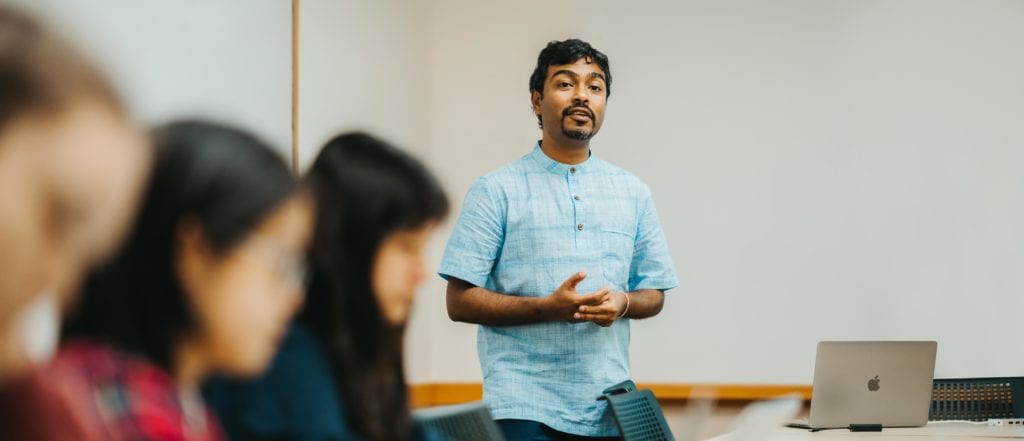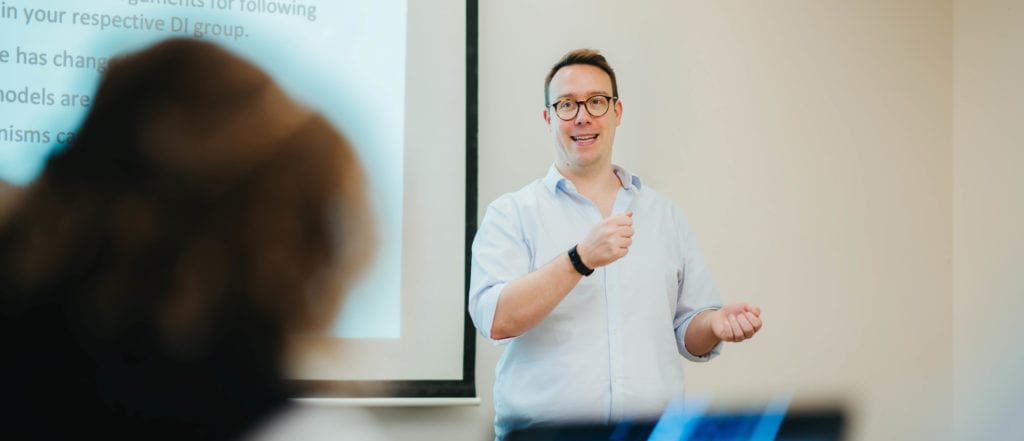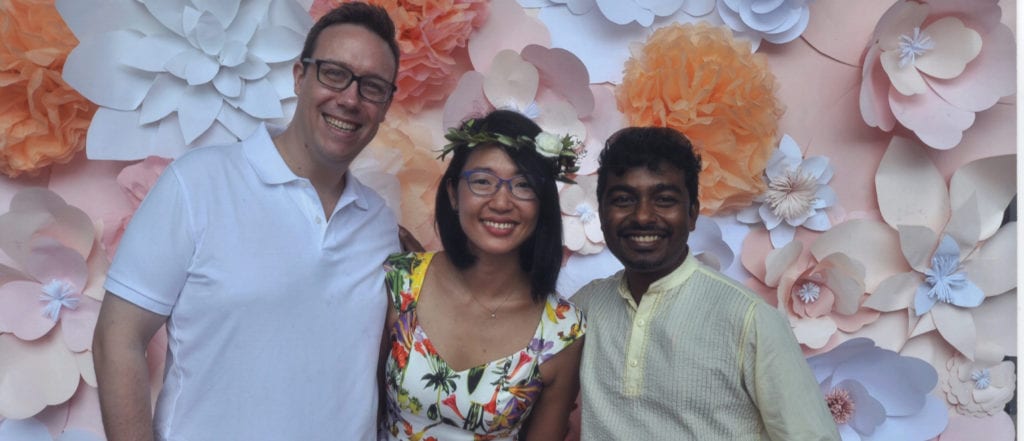Interdisciplinary collaboration spurs new research findings at Yale-NUS College
Two Yale-NUS scientists, a behavioural neuroscientist and a mathematician, have successfully collaborated to apply computational geometry to the study of animal behaviour. Assistant Professors of Science Ajay Mathuru (Life Sciences) and Matthew Stamps (Mathematics), together with a third researcher, Ms Soo Go, have published their research, titled “Computational geometric tools for quantitative comparison of locomotory behaviour” in Scientific Reports.
In this research, the researchers used applied geometry to quantify animals’ behavioural responses to external stimuli.
 Asst Prof Ajay Mathuru teaching a class. Image provided by Yale-NUS Centre for Teaching & Learning.
Asst Prof Ajay Mathuru teaching a class. Image provided by Yale-NUS Centre for Teaching & Learning.
“Individuals differ in their response to external stimuli, even when executing behaviours that are considered stereotypic, or innate, in a species,” said Asst Prof Mathuru. “Hence, researchers who study behaviour are always looking for means to differentiate and quantify behavioural responses in two or more conditions without losing the ability to quantify the variability between individuals within a condition.”
The researchers found that meaningful differences between alarmed and normal swimming patterns in medaka fish — the animals with which they conducted the study — are encoded in the geometry of the animals’ trajectories. This then allowed them to automate the process of measuring differences between behavioural episodes without needing an expert to identify and search for specific action patterns.
Complementing their paper, the team has also published an open-source software package allowing other researchers to tap on these techniques to study the locomotion behaviours of other animals.
The seeds for this unlikely neuroscience-mathematics partnership were sown in 2015, the year that both faculty members joined Yale-NUS. A group of faculty from both their office suites met for dinner weekly, allowing them to form a friendship and talk regularly about their research programmes. This eventually led to Asst Prof Mathuru consulting Asst Prof Stamps on an ongoing research interest of his: finding a possible method to measure the behaviours of fish to different stimuli while isolating the inherent variability between individual fish.
“What captured my interest in this project was the idea that meaningful behavioural information could be encoded in the geometry of the trajectories (of the animals),” said Asst Prof Stamps. “I had an idea for how to align the trajectories in a way that would capture the essential locomotory behavioral information without getting bogged down by the inherent variability in timing and location, but I wasn’t sure how to implement it computationally.”
 Asst Prof Matt Stamps teaching a class. Image provided by Yale-NUS Centre for Teaching & Learning.
Asst Prof Matt Stamps teaching a class. Image provided by Yale-NUS Centre for Teaching & Learning.
A blackboard discussion in Asst Prof Stamps’ apartment followed. Overhearing their concerns about the computational feasibility of their mathematical solution, Ms Soo Go, an industrial mathematician with software development experience and Asst Prof Stamps’ partner, then provided the technical expertise to bring the project to fruition.
 (From left) Asst Prof Matthew Stamps, Ms Soo Go and Asst Prof Ajay Mathuru have jointly published a paper titled “Computational geometric tools for quantitative comparison of locomotory behaviour” in Scientific Reports.” Image provided by Asst Prof Ajay Mathuru.
(From left) Asst Prof Matthew Stamps, Ms Soo Go and Asst Prof Ajay Mathuru have jointly published a paper titled “Computational geometric tools for quantitative comparison of locomotory behaviour” in Scientific Reports.” Image provided by Asst Prof Ajay Mathuru.
Moving forward, the researchers believe that there is ample room for their findings to be extended, and to help other scientists further their research.
“We can imagine our open-source software package, for example, being used to study the locomotion behaviour of not only fish, but any animal,” said Asst Prof Mathuru. “This would come in useful especially because the software does not require users to possess in-depth computational geometry knowledge — others can adapt it to their specific needs.”
For instance, the team has already received interest from researchers seeking to apply these methods to examine differences between spatial patterns of rodent navigation in a learning and memory task.
Both faculty members noted that the close-knit, liberal arts and sciences environment of Yale-NUS played no small role in realising their project.
“This project would likely not have happened without the liberal arts environment provided by Yale-NUS,” said Asst Prof Stamps. “If the College had adopted a traditional departmental structure, Asst Prof Mathuru and I would not have had the numerous one-on-one interactions where we came to understand and appreciate each other’s work, and without the close-knit residential community near campus, Soo [Go] may not have been present for the crucial moment of the project when we realised we could implement our ideas.”
Asst Prof Mathuru concurred. “In a small liberal arts and sciences college like ours, opportunities for interdisciplinary work emerge because it is possible to delve deep into a topic in informal interactions such as at the dining hall, between people from different backgrounds. New areas of study emerge because of discussions among people who may not meet otherwise in their disciplinary settings.”





